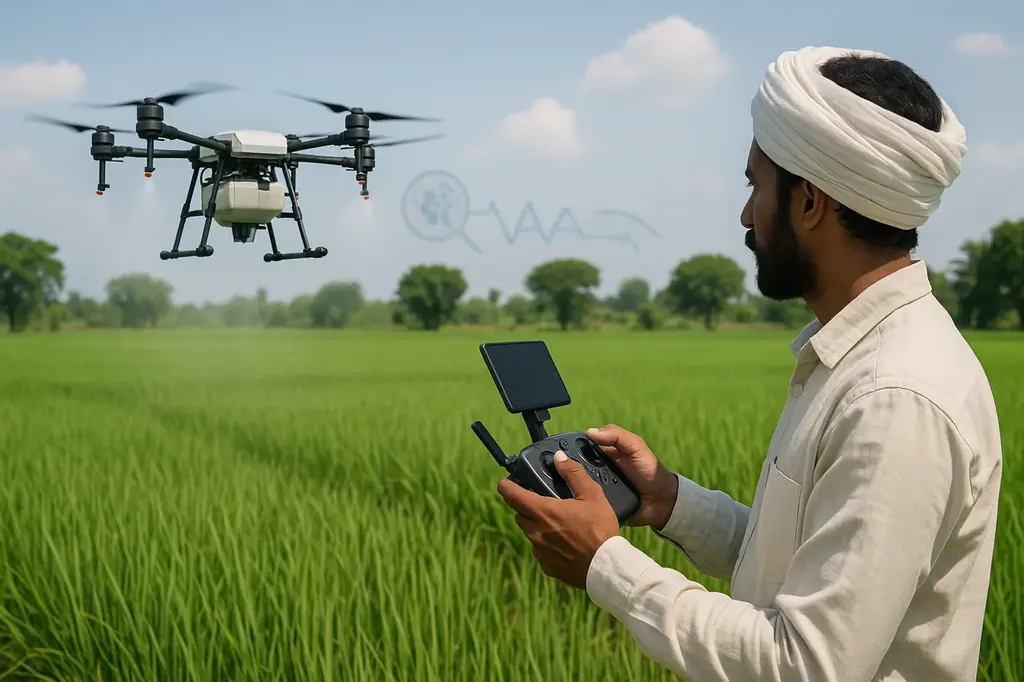In the heart of Bhopal, in Madhya Pradesh, in India, a recent demonstration by KIREAP, a deep-tech startup with headquarters in Zurich and operational roots in India, quietly hinted at how farming might look in the near future. Unlike splashy launches or flashy promises, KIREAP’s showcase focused on a more grounded ambition: making farming easier, smarter, and less dependent on chance.
The event marked more than just a presentation. It offered a glimpse into a growing effort to bring technology closer to the real-life issues that farmers face — from unpredictable weather and unreliable markets to labor shortages and logistical inefficiencies. KIREAP’s approach, combining artificial intelligence, drone-based surveillance, and blockchain-backed transparency, is already being tested on Indian soil. And for many farmers, it’s starting to offer more than just another digital tool — it’s becoming part of their daily practice.
A Technology Stack Built for the Farm, Not the Boardroom
KIREAP calls its core offering a “System of Systems,” or SoS. While that might sound abstract, its practical effects are anything but. The platform pulls together autonomous drones, AI analytics, satellite data, quantum computing elements, and blockchain to address challenges throughout the agricultural supply chain.
At its simplest, this means a drone can fly over a field, gather crop health data, analyze it in real-time, and feed that data into a larger network that helps predict market trends, weather disruptions, and transport needs. Farmers receive insights directly on a digital platform that they can access, often with support from local NGO partners. These insights help them plan better, harvest more efficiently, and connect with buyers without needing middlemen.
KIREAP’s blockchain system adds an extra layer of transparency — not in a buzzwordy way, but by making it easier for farmers to trace how their produce moves through the market, how pricing changes, and what logistics affect their final payments.
Farmer-First Design and Growing Trust on the Ground
KIREAP’s platform has already drawn over 15,000 Indian farmers, thanks largely to on-ground partnerships with organizations like Pradan and the Syngenta Foundation. These partnerships have helped roll out the technology with proper training and community involvement, rather than just dropping in apps or devices.
Sanjay Mudgal, who leads the company’s Indian operations, emphasized this slow but steady engagement model. He also pointed out that adoption isn’t just a number to KIREAP — it’s a sign of relevance. If thousands of farmers are not only signing up but also continuing to use the system, it signals that it’s actually helping, not just sitting unused in their phones.
“KIREAP’s ground operations have achieved remarkable success, with over 15,000 farmers successfully onboarded and trained through strategic partnerships with organizations like Pradan and Syngenta Foundation. This accomplishment demonstrates not just the scale of our operations, but more importantly, the trust farmers place in KIREAP’s technology-driven solutions. The enthusiastic adoption by farming communities validates our farmer-first approach and the practical value our platform delivers.’
Sanjay Mudgal, Head of Indian Operations, KIREAP
Seeing Fields from the Sky: Drones and Precision Agriculture
Karthik, who heads remote sensing at KIREAP, explained how drones are used to do more than just aerial photography. He explained how drones are used for multispectral imaging, meaning they don’t just take pictures — they analyze plant health, detect early signs of disease, and monitor soil moisture.
The drones don’t need constant human control. They operate on programmed flight paths, collecting and analyzing data in real-time. This data feeds back into the AI system, which can then alert farmers to potential issues — long before a human eye might catch them.
This combination of drone-based imaging and satellite data, alongside real-time weather tracking, offers a new method of what’s often called precision agriculture. But for the farmers using it, it’s simply a way to stay ahead — of pests, weather shifts, or low yields.
Also Read: 15 App-Based Agritech Innovations Showcased at Startup Mahakumbh 2025
Beyond the Field: Looking Toward Transport and Urban Mobility
While KIREAP’s current focus is on fields and farms, its larger roadmap stretches beyond the rural landscape. The company is working toward an ecosystem that could include multimodal logistics networks, more advanced unmanned aerial vehicles, and even applications in urban air mobility — a nod to the future of how goods, including food, might move in and out of cities.
Having operational bases in both India and Germany gives the startup a dual perspective — one rooted in the practical challenges of farming and another in the engineering expertise of Europe’s tech hubs. With expansion plans targeting the US and Singapore, KIREAP aims to take the lessons it’s learning in India to other regions with similarly complex supply chains and agricultural ecosystems.
A Growing Chapter in a Larger Story
What makes KIREAP’s work notable isn’t just its tech stack or its drone algorithms. It’s how the company is positioning technology not as a replacement for farmers, but as an assistant — one that works in the background, providing steady support. There’s no promise here of instant transformation or overnight success. But there is a sense that small changes — like using real-time crop diagnostics, or knowing where produce ends up — can add up to meaningful shifts in how farming works.
For now, KIREAP’s real success lies in its steady, boots-on-the-ground progress: local partnerships, real-time training, and a willingness to adapt. And in a space where promises often outpace results, that kind of quiet consistency might just be what the sector needs most.


